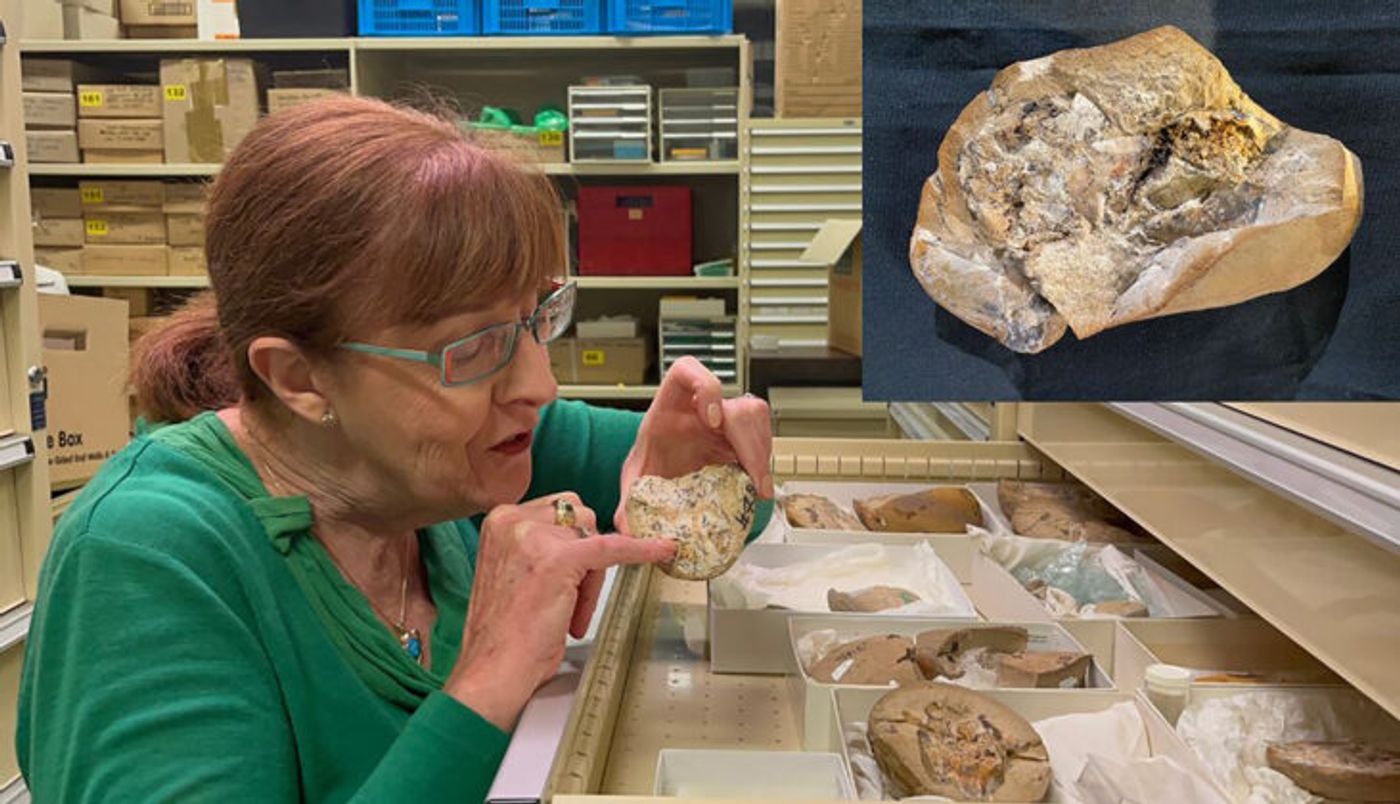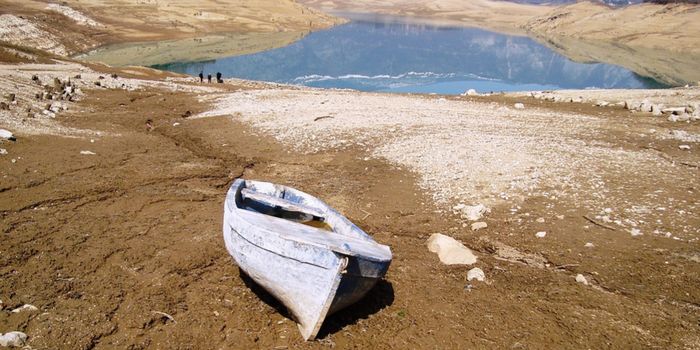380-Million-Year-Old Fossilized Heart Discovered
Professor Kate Trinajstic examines ancient fossils at the Western Australian Museum that were collected from the Gogo Formation. Inset: The 3D preserved Gogo fish fossil, which is a 380-million-year-old heart, was one of those collected fossils. (Credit: Curtin University)
In a recent study published in Science, an international team of researchers led by the School of Molecular and Life Sciences at Curtin University in Australia have unearthed a 380-million-year-old heart—the oldest ever discovered—within the bodies of arthrodires, which is an extinct class of armored fishes that thrived from 419.2 million years ago to 358.9 million years ago during what is known as the Devonian Period. Along with the heart, the researchers also found a fossilized liver, stomach, and intestine, and the positions of the organs within the arthrodires share similarities with the anatomies of modern sharks. This study holds the potential to help us better understand our own anatomy and was collaborated with researchers from France and Sweden.
"As a paleontologist who has studied fossils for more than 20 years, I was truly amazed to find a 3D and beautifully preserved heart in a 380-million-year-old ancestor," said Dr. Kate Trinajstic, who is a Distinguished Professor within the School of Molecular and Life Sciences at Curtin, and lead author of the study.
"Evolution is often thought of as a series of small steps, but these ancient fossils suggest there was a larger leap between jawless and jawed vertebrates. These fish literally have their hearts in their mouths and under their gills -- just like sharks today."
This is the first time that any such research has presented the 3D model of a complex s-shaped heart within an arthrodire comprised of two chambers with the smaller of the two chambers sitting up top.
"For the first time, we can see all the organs together in a primitive jawed fish, and we were especially surprised to learn that they were not so different from us," said Professor Trinajstic.
"However, there was one critical difference -- the liver was large and enabled the fish to remain buoyant, just like sharks today. Some of today's bony fish such as lungfish and birchers have lungs that evolved from swim bladders but it was significant that we found no evidence of lungs in any of the extinct armored fishes we examined, which suggests that they evolved independently in the bony fishes at a later date."
The fossils were collected in what’s known as the Gogo Formation, which was originally a large reef located in the Kimberly region of Western Australia.
Sources: Science
As always, keep doing science & keep looking up!
Video Credit: Alice Clement









